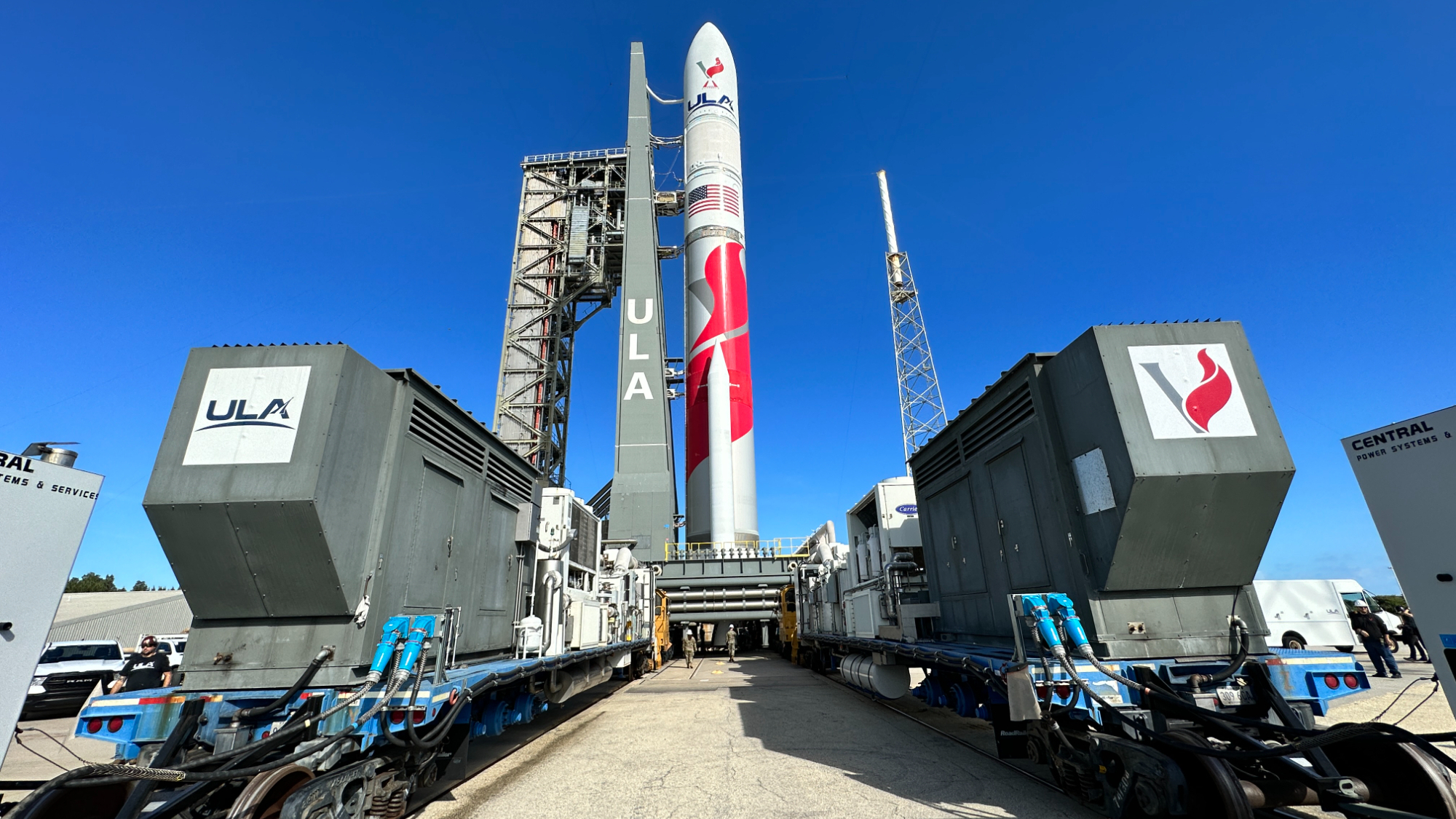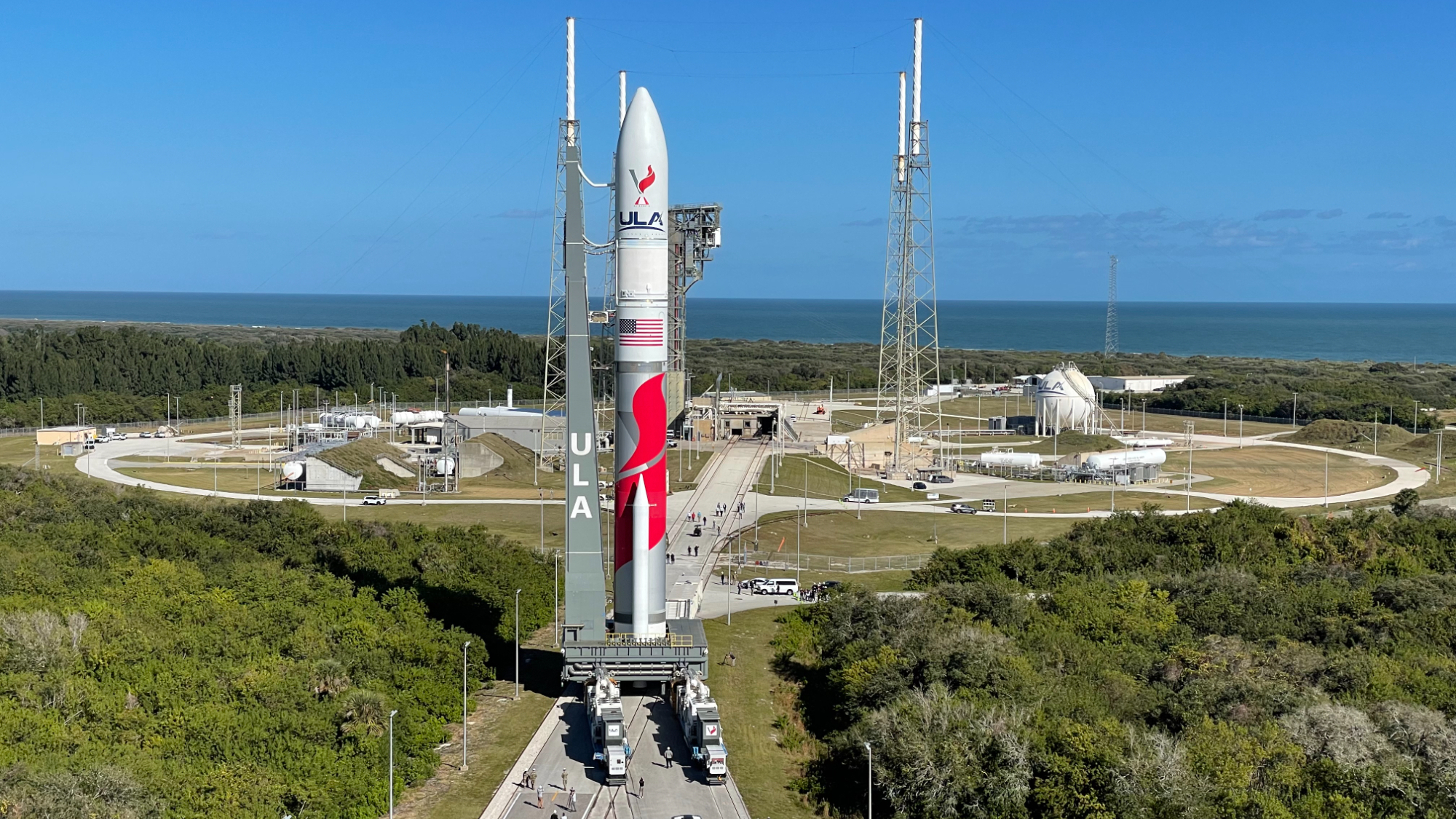Vulcan Centaur rocket arrives at pad ahead of debut launch (photos)

A powerful new rocket has arrived at the pad for its first-ever liftoff.
United Launch Alliance (ULA) rolled its Vulcan Centaur rocket out to Space Launch Complex-41 at Florida's Cape Canaveral Space Force Station this morning (Jan. 5), keeping it on target for a planned Monday (Jan. 8) launch.
That liftoff, which is scheduled for 2:18 a.m. EST (0718 GMT) on Monday, will send the private Peregrine lander toward the moon. You can watch the action live here at Space.com, courtesy of NASA TV, beginning at 1:30 a.m. EST (0630 GMT).
Related: 10 exhilarating spaceflight missions to watch in 2024
The 202-foot-tall (62-meter-tall) Vulcan Centaur will replace ULA's venerable Atlas V and Delta IV rockets, which have sent many prominent payloads skyward over the past few decades.
The new rocket made the 0.3-mile (0.5-kilometer) trek from its hangar this morning "with the help of undercarriage railcars and trackmobile machines that push[ed] the entire 1.7-million-pound (771,000-kg) platform and #VulcanRocket along tracks up the hill to the pad," ULA wrote in a post on X today.
"Now that is a beautiful sight," ULA CEO Tory Bruno wrote in an X post of his own today, which shared a photo of the red-and-white Vulcan Centaur standing atop the pad at the end of the rollout.
Breaking space news, the latest updates on rocket launches, skywatching events and more!
Monday's launch will also mark the debut of Peregrine, a robotic moon lander built by Pittsburgh company Astrobotic. Peregrine will target a touchdown next month, and success would be historic; no private craft has ever aced a lunar landing.
Peregrine is flying via NASA's Commercial Lunar Payload Services program, which aims to pave the way for the agency's Artemis astronaut missions. The private lander is carrying a variety of science payloads provided by NASA and Germany's space agency, known as DLR.
Astrobotic booked some private payloads on this Peregrine flight as well, including memorial capsules organized by the companies Celestis and Elysium Space. This cargo has sparked a some controversy; the Navajo Nation has objected to the capsules' inclusion, saying the deposition of human remains on the moon would violate a sacred space.

Michael Wall is a Senior Space Writer with Space.com and joined the team in 2010. He primarily covers exoplanets, spaceflight and military space, but has been known to dabble in the space art beat. His book about the search for alien life, "Out There," was published on Nov. 13, 2018. Before becoming a science writer, Michael worked as a herpetologist and wildlife biologist. He has a Ph.D. in evolutionary biology from the University of Sydney, Australia, a bachelor's degree from the University of Arizona, and a graduate certificate in science writing from the University of California, Santa Cruz. To find out what his latest project is, you can follow Michael on Twitter.


